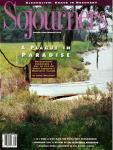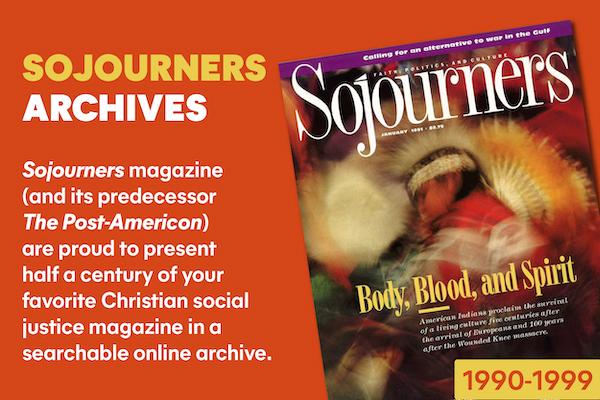Jazz, Toni Morrison's newest novel, is yet another example of the author's genius. Her technical mastery at mixing myth with metaphor, folklore with fable, poetry and taunt, lyrical narrative with political polemic has gained her recognition not only as a great American writer but also as one of the most provocative scribes in these modern times.
From The Bluest Eye, written two decades ago, to Beloved, for which she was awarded the Pulitzer Prize for fiction in 1988, Morrison has mined the particulars of the black experience. Her novels spin out poignant portrayals of characters forced to acknowledge the wages of sin, the price of pride and prejudice, and the cost of suffering, betrayal, alienation, loss, yearning, and unrequited love. To read a Morrison novel is to become engaged in a world of the tragic and the revelatory, to prod (sometimes vigorously) at the soft dimple of human frailty, and to occasion characters as grooved in the noble quest for self-definition as they are determined to find comfort in commitment and community.
Her prose, undergirded by an Afro-magical realism, is an intoxicating expression of a poetic pre-lingualism where thought, memory, and image supersede the niceties of syntax. In short, Morrison is in charge of a profound literary verve, sitting erect, like some priestess, among the best of our current storytellers. Anyone seriously doubting her superior talents need simply ponder the definition of what constitutes literary genius and then include her name. Case closed.
Yet Morrison's novels, peopled by bleak, constricted characters whose outcomes are as drear as their beginnings, are often unsettling upon digestion. The pain and perversities of the people in her novels are dissected and magnified in an almost actionless narrative. Moral, political, and spiritual growth seem always impeded under the weight of an obliquely stated and foreboding determinism.
Jazz, a novel set in the 1920s, falls directly into this Morrisonian mode: It is a book precisely and magnificently drawn, but lacking an entirely rounded assessment of the human capacity for joy, psychological autonomy, and true affection between individuals.
Joe and Violet Trace are the book's two central characters. Their marriage and pilgrimage from the rural sharecropper's life of the South to the bright lights and broad streets of New York City are chronicled. Joe, a 50-year-old cosmetics salesman, murders Dorcus Manfred, a teen-age paramour, for fear of losing her. This event tosses Joe and Violet (a free-lance hair dresser who attacks Dorcus' corpse during the funeral service) into a matrix of memory, retribution, and quest for renewal.
All of Morrison's characters in this novel are richly drawn, eloquent, and intelligently inspired. The story itself is told by a distanced onlooker whose initial cockiness about what transpires between the novel's characters wanes finally to confusion and then to pleading queries to the reader.
BUT WHERE is the connection between Jazz the novel and jazz the musical form? How are the two reconciled? Neither Joe nor Violet are jazz musicians. They and their friends hardly listen to the music, though they apparently are aware of its new, energetic cadence.
The answer to this query is twofold. First, Morrison uses this novel as a means of demythologizing the era. Ostensibly, she is attempting to debunk established histories of the jazz age as that period including only the Harlem Renaissance; or people like Ernest Hemingway, Gertrude Stein, and F. Scott Fitzgerald; or images of bootleg liquor, sequined dresses, loose sexuality, and the Charleston.
Here Morrison plays the historical revisionist. The jazz era, she seems to suggest, should more properly be seen as that period which saw the great migration of blacks from the rural Southland to the urban, industrial caverns of the North; black engagement in World War I; and the group's dogged attempts to live ordinarily in a post-slavery but adamantly repressive culture. Second, the novel is written with a jazz feel. The book is lyrical and its passages as elliptical, surprising, and tempting as the music itself.
But Jazz, at least in one sense, is deeply flawed. It flounders because Morrison unfortunately predicates its meaning on an incomplete definition of the genre. True, jazz can not be rightly understood out of historical context: Its meaning is vital to its authentic contextuality and Morrison is right in setting the record straight. Similarly, Morrison is keen to pay homage to jazz by putting it to written word. Baldwin did this for gospel; she is the only one to do it so well for jazz.
What Morrison fails to do, however, is recognize that, at bottom, jazz is a cultural expression highly preoccupied with the existential demands of hope and assertability. This somewhat philosophical understanding of the genre is critical to the comprehensive definition Morrison lacks.
Every jazz artist -- from Louis Armstrong to Billie Holiday, from Thelonius Monk to Wynton Marsalis -- is engaged in a uniquely stylized black vocabulary that simultaneously voices the difference and alienation of African Americans (assertability) and a prospective, transformative vitality, or purpose for living, in a racist culture (hope).
As a musical form, jazz evolved as an oppositional expression that in part rejected the formal peculiarities of Western music. This rebellion is grounded in the political and social attitudes expressed by and large by blacks. Moreover, its cultural subtext was and remains decidedly eschatological. Morrison misses this. These themes simply don't ring tonally or atonally true in Morrison's Jazz. Still Jazz is sublimely Ellingtonian. A must read.
Kevin C. Peterson was a freelance writer living in Dorchester, Massachusetts when this article appeared.
Jazz. By Toni Morrison. Alfred A. Knopf, 1992. $21 (cloth).

Got something to say about what you're reading? We value your feedback!
